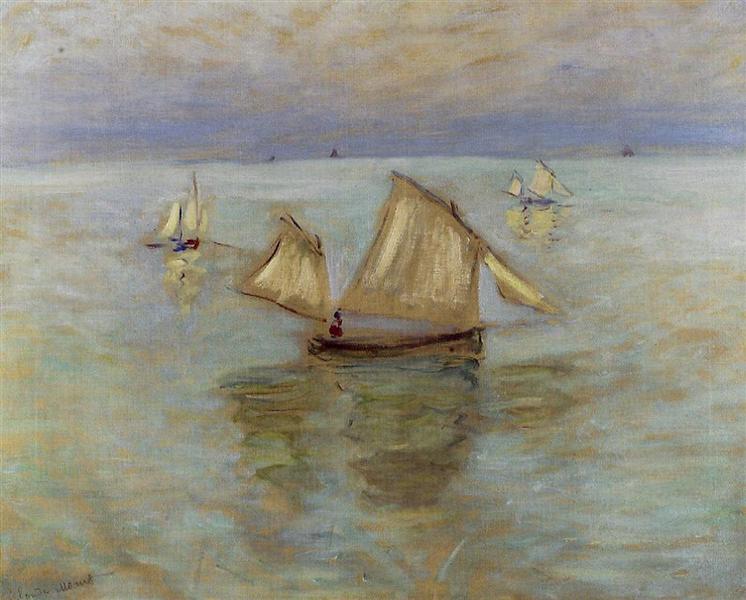Beskrivelse
Claude Monet's Fishing Boats at Pourville (1882) is an exquisite example of the impressionist approach that characterizes much of his work and has left an indelible mark on art history. This painting, produced during one of his most creative periods, reveals not only Monet's technical mastery but also his deep connection with the seascape and the subtle variations of light it offers. The work is a testament to the artist's use of nature as a means of exploring visual perception.
In the foreground, the composition focuses on two fishing boats moored on the shore of the beach at Pourville, a seaside town in Normandy, France. The arrangement of the boats—one prominently positioned, larger and in focus, the other slightly removed—creates a visual dialogue that invites the viewer to explore the depth of the scene. The stylized yet realistic shapes of the boats show Monet’s attention to detail, while his loose, rapid technique brings the water’s surface and the sand of the beach to life, connecting the two elements through a dynamic play of light and reflection.
Colour plays a central role in this painting, where Monet employs a palette that oscillates between light and vivid shades of blue, green and white, evoking the serenity of the sea and the sky. The shades of blue in the water contrast with the soft tones of beige and sand, creating a vibrant atmosphere that seems to breathe movement. The application of short, bold brushstrokes, typical of Impressionism, not only makes the texture seem almost palpable, but also suggests an instant capture of a fleeting moment, perhaps the sea breeze caressing the surface of the water.
In this work, there are no prominent human figures, which is notable compared to Monet's other works where he often includes people enjoying the landscape. In "Fishing Boats at Pourville", the absence of figures seems to reinforce the idea of nature in its pure state and the relationship between man and the sea through his fishing activity. The focus on boats as central elements underlines the importance of daily life and work in the life of coastal communities.
This painting also resonates with the evolution of Monet's style toward a greater use of less saturated and more luminous colors, marking a transition that some critics have noted in the context of his artistic development. Related paintings from this period, such as Woman with an Umbrella or Impression, Sunrise, demonstrate his ability to capture ever-changing light and its effects on the landscape, a characteristic that made Monet a pioneer of the Impressionist movement.
In conclusion, “Fishing Boats at Pourville” is not just a work that portrays a coastal scene; it is a window into the web of feelings that nature can evoke, as well as Monet’s ability to transform it into visual art. His technique, use of color, and intimate depiction of outdoor life invite us to reflect on the ephemeral beauty of the moment and the essential connection between man and nature. This painting, like many of Monet’s masterpieces, invites to be contemplated not only in terms of its technical attributes, but in the emotional and perceptual depth that emanates from the canvas.
KUADROS ©, a famous painting on your wall.
Hand-made oil painting reproductions, with the quality of professional artists and the distinctive seal of KUADROS ©.
Painting reproduction service with satisfaction guarantee. If you are not completely satisfied with the replica of your painting, we will refund 100% of your money.

